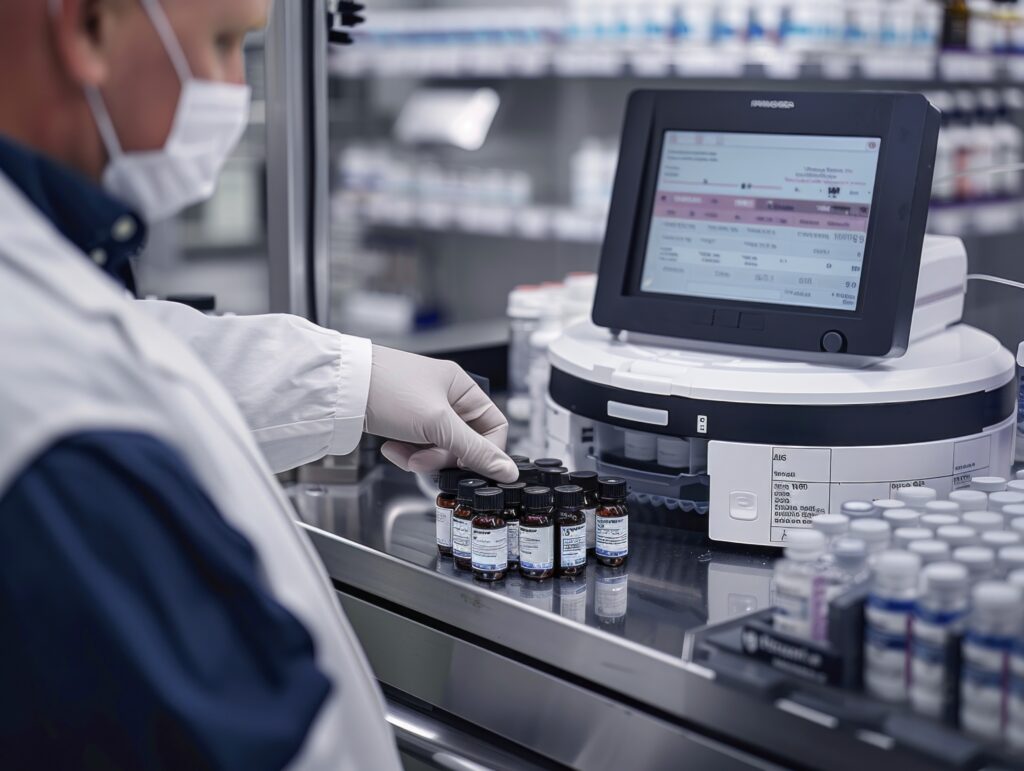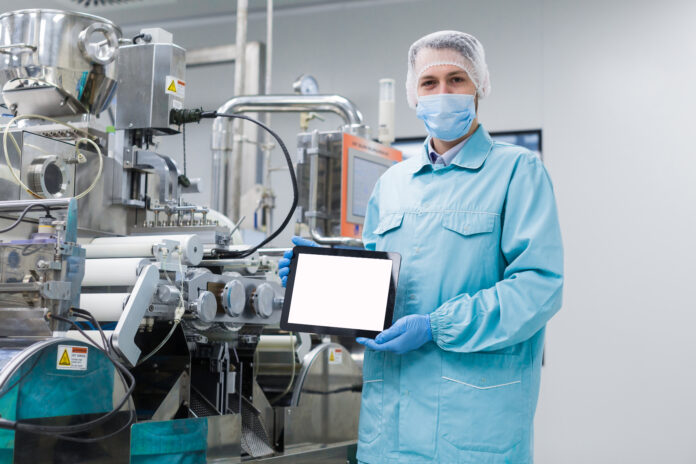The pharmaceutical industry operates under strict regulatory frameworks and faces a constant challenge to maintain product quality while improving production efficiency. The delicate balance between meeting regulatory standards, ensuring consistent product quality, and maintaining operational efficiency is a daunting task. In this high-stakes environment, the adoption of IoT (Internet of Things)-enabled sensors and predictive maintenance strategies are transforming quality control practices and revolutionizing maintenance approaches in pharmaceutical manufacturing..
IoT-enabled sensors allow manufacturers to monitor critical production variables in real time, ensuring that pharmaceutical products meet the highest standards. This technology significantly enhances the ability to maintain compliance with regulatory requirements while reducing downtime, improving product quality, and ensuring patient safety.
The Importance of Quality Control in Pharmaceutical Manufacturing

Pharmaceutical products are consumed by millions of people worldwide, and their safety and efficacy are paramount. As a result, quality control is one of the most critical aspects of pharmaceutical manufacturing. Every drug must meet stringent criteria to ensure it works as intended and does not pose any risks to patients. This requires careful monitoring of multiple variables throughout the production process, including raw material handling, formulation, mixing, packaging, and storage.
Traditionally, quality control processes have involved manual inspections and batch testing, which are time-consuming and often lead to production bottlenecks. Moreover, these methods may only identify issues after production, leading to costly recalls or even the destruction of entire batches.
IoT-enabled sensors offer a solution by providing real-time monitoring of critical parameters that affect product quality, such as temperature, humidity, pressure, and particulate levels. By detecting deviations from set parameters early, manufacturers can intervene before these deviations impact product quality, ensuring consistent production output.
How IoT-Enabled Sensors Improve Maintenance and Quality Control
One of the most significant challenges in pharmaceutical manufacturing is ensuring that all machinery operates efficiently and within strict specifications. Any deviation in equipment performance can affect the production process, leading to substandard products and regulatory non-compliance. This is where IoT-enabled sensors play a vital role in revolutionizing both maintenance and quality control.
Real-Time Equipment Monitoring:
IoT sensors are embedded in various pieces of manufacturing equipment, such as tablet presses, reactors, and filling machines. These sensors continuously monitor equipment performance by tracking variables such as vibration, pressure, temperature, and speed. When the system detects any anomalies or deviations from optimal conditions, alerts are automatically generated for maintenance personnel, allowing them to address the issue before it affects product quality.
For example, tablet presses must operate under precise pressure to form uniform tablets with the correct dosage. IoT sensors can monitor the pressure and force applied during tablet compression. If the pressure drops or exceeds the required range, it could result in defective tablets, potentially compromising patient safety. By identifying these deviations in real time, operators can make immediate adjustments, ensuring consistent quality.
Predictive Maintenance for Reduced Downtime:

Maintenance in pharmaceutical manufacturing is traditionally scheduled at regular intervals, regardless of equipment condition. This reactive maintenance model can lead to unscheduled downtime if machinery breaks down unexpectedly, causing production delays and financial losses. Even worse, equipment failure during a production run can introduce quality issues that result in product recalls.
IoT-enabled sensors, however, enable a shift from reactive to predictive maintenance. Predictive maintenance relies on data from sensors to predict when equipment is likely to fail. By analyzing this data over time, algorithms can detect patterns that indicate when maintenance is required. This allows technicians to service equipment before a failure occurs, avoiding unplanned downtime.
For example, sensors that monitor vibration in rotating machinery, such as centrifuges, can detect abnormal patterns that indicate wear on bearings or other components. By predicting when these components will need to be replaced, maintenance teams can schedule repairs during planned downtime, avoiding disruptions to production and ensuring equipment operates at peak efficiency.
Environmental Control for Sterile Conditions:
Environmental factors, such as temperature, humidity, and air quality, play a crucial role in pharmaceutical manufacturing, especially in the production of sterile drugs, biopharmaceuticals, and vaccines. Even minor fluctuations in environmental conditions can compromise product quality or lead to contamination, requiring the destruction of entire batches of drugs.
IoT-enabled sensors help manufacturers maintain a controlled environment by continuously monitoring and adjusting these critical parameters. In clean rooms, for instance, sensors track particulate levels and air pressure to prevent contamination. If any deviation occurs, the system can immediately adjust airflow or humidity levels to maintain the required conditions, ensuring that the manufacturing environment remains within acceptable limits.
An example can be seen in the production of injectable drugs, which must be manufactured in a sterile environment to prevent contamination. If a sensor detects that humidity levels are rising beyond acceptable levels, it can trigger adjustments to the HVAC system, restoring the proper conditions and preventing contamination that could lead to costly quality control failures.
Data-Driven Quality Control and Continuous Improvement
One of the most profound advantages of IoT-enabled sensors is the massive amount of data they generate. This data is invaluable for improving both quality control and maintenance practices in pharmaceutical manufacturing. By analyzing sensor data, manufacturers can gain deep insights into production processes and equipment performance, enabling continuous improvement.
Machine learning algorithms can process the data collected by IoT sensors to identify patterns and trends that may not be immediately apparent. For example, by analyzing the correlation between environmental factors and product quality, manufacturers can fine-tune their processes to achieve better results. If data shows that a slight temperature variation in one stage of production consistently leads to product defects, adjustments can be made to prevent future occurrences.
Furthermore, data-driven insights allow for more efficient resource allocation. Instead of adhering to a rigid maintenance schedule, resources can be directed to areas where they are most needed. This targeted approach reduces costs while ensuring that machinery and processes continue to operate within the strict quality control standards of the pharmaceutical industry.
Enhancing Regulatory Compliance and Traceability
The pharmaceutical industry is heavily regulated, with manufacturers required to comply with standards such as Good Manufacturing Practices (GMP) and the U.S. Food and Drug Administration (FDA) guidelines. Non-compliance can result in costly penalties, product recalls, and damage to a company’s reputation. Therefore, maintaining comprehensive records of production processes, environmental conditions, and maintenance activities is critical.
IoT-enabled sensors make it easier for pharmaceutical manufacturers to comply with regulatory requirements by automating data collection and record-keeping. Sensors continuously monitor equipment, processes, and environmental factors, automatically generating digital records that provide a detailed history of each production batch. This data is invaluable during regulatory audits, as it provides a transparent and traceable account of how drugs were manufactured, stored, and tested.
For example, if a temperature-sensitive drug is being produced, sensors can record the precise temperature and humidity levels during each stage of production. In the event of an audit or product recall, this data allows manufacturers to trace the root cause of the issue, ensuring faster resolution and preventing future occurrences.
Conclusion
IoT-enabled sensors are revolutionizing the way pharmaceutical manufacturers approach both maintenance and quality control. By providing real-time monitoring of critical equipment and environmental factors, these sensors ensure that drugs are produced under optimal conditions, reducing the risk of defects and ensuring compliance with stringent regulatory standards. Predictive maintenance, driven by IoT data, reduces equipment downtime and enhances operational efficiency. Ultimately, IoT technology is transforming pharmaceutical manufacturing, enabling companies to deliver safer, higher-quality products to patients while optimizing their production processes.
As the industry continues to embrace IoT technology, the future of pharmaceutical manufacturing will undoubtedly be shaped by smarter, more efficient, and more reliable production processes that prioritize both quality and patient safety.
